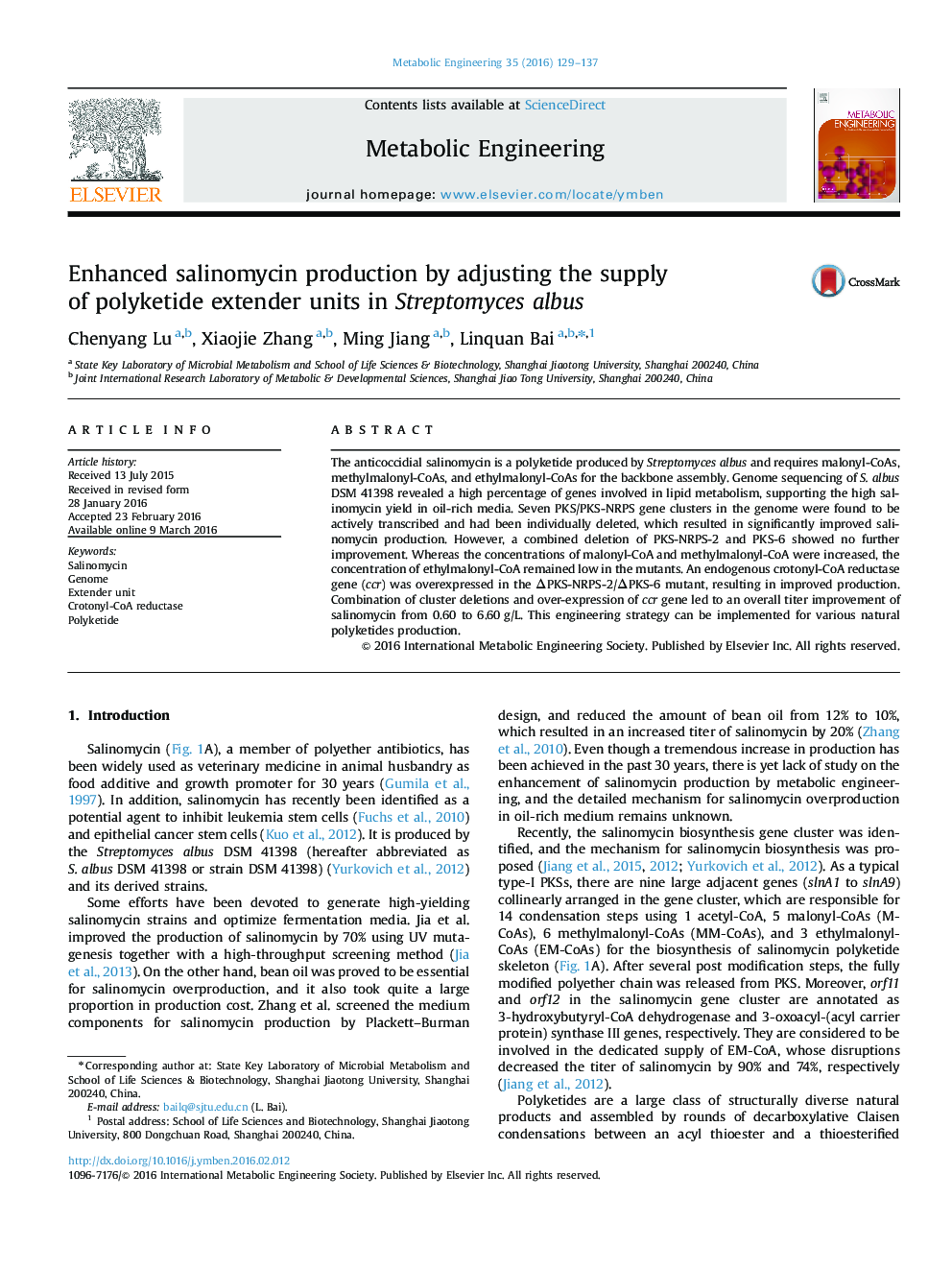| Article ID | Journal | Published Year | Pages | File Type |
|---|---|---|---|---|
| 31502 | Metabolic Engineering | 2016 | 9 Pages |
•Streptomyces albus genome explained high salinomycin yield in oil-rich medium.•Quantitation of acyl-CoA esters identified limiting factors and engineered targets.•Cluster deletions and ethylmalonyl-CoA over-expression improved salinomycin titer.
The anticoccidial salinomycin is a polyketide produced by Streptomyces albus and requires malonyl-CoAs, methylmalonyl-CoAs, and ethylmalonyl-CoAs for the backbone assembly. Genome sequencing of S. albus DSM 41398 revealed a high percentage of genes involved in lipid metabolism, supporting the high salinomycin yield in oil-rich media. Seven PKS/PKS-NRPS gene clusters in the genome were found to be actively transcribed and had been individually deleted, which resulted in significantly improved salinomycin production. However, a combined deletion of PKS-NRPS-2 and PKS-6 showed no further improvement. Whereas the concentrations of malonyl-CoA and methylmalonyl-CoA were increased, the concentration of ethylmalonyl-CoA remained low in the mutants. An endogenous crotonyl-CoA reductase gene (ccr) was overexpressed in the ΔPKS-NRPS-2/ΔPKS-6 mutant, resulting in improved production. Combination of cluster deletions and over-expression of ccr gene led to an overall titer improvement of salinomycin from 0.60 to 6.60 g/L. This engineering strategy can be implemented for various natural polyketides production.
